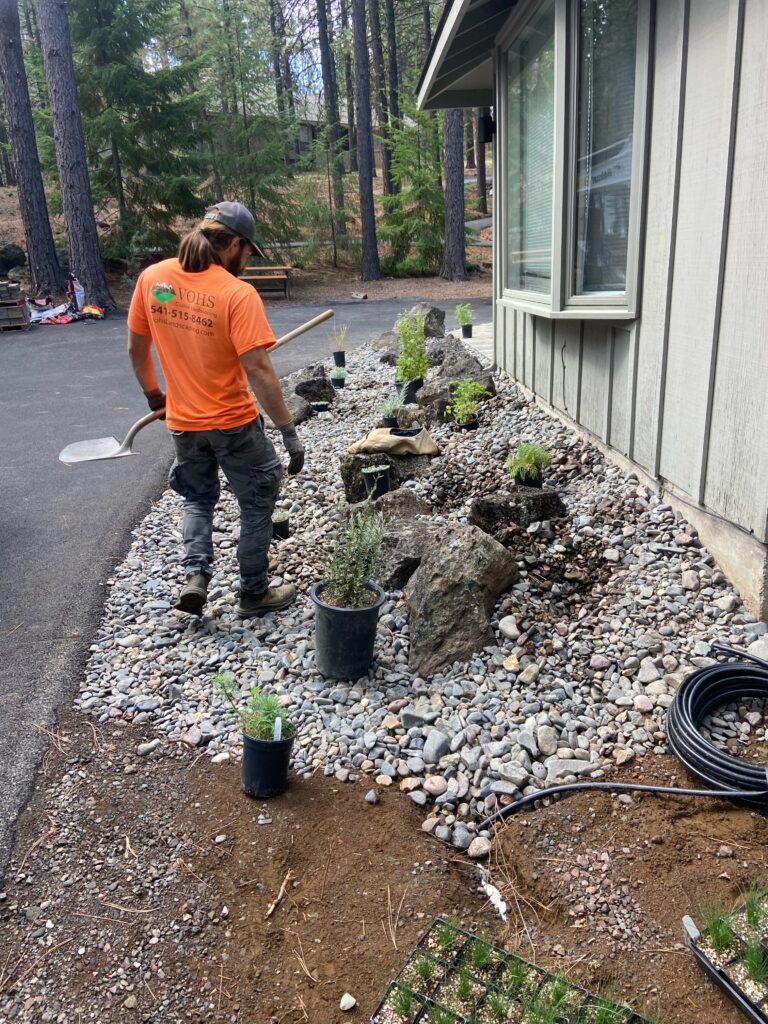The final stage of a landscape project is the ground covering stage.
This is when the finishing touches are made to the landscape, and the areas surrounding the plants, trees, and other vegetation are covered with mulch, bark dust, gravel, or another ground covering material.
The type of material used depends on the specific project requirements, including the climate, soil type, and the amount of moisture the area will receive.

Decorative Ground Covers (such as bark dust) is a popular choice for many projects because it is attractive and helps retain moisture. It’s also great for suppressing weeds and preventing soil erosion.
Decorative Rock (such as gravel) is often used in areas with heavy foot traffic or where there’s an increased risk of erosion. It’s also a cost-effective option that’s low-maintenance and can be used in various colors and textures to match the project’s design.
Ground covering materials play an important role in the overall appearance of the landscape. It helps to make the plants and other features stand out, while also providing a clean, finished look to the overall project. The ground covering material also provides a protective barrier between the plants and the soil, helping to reduce the risk of disease and pests.
In addition to selecting the right ground covering material, it’s also important to install it properly. The material should be evenly spread over the area and no more than three inches deep. This will help to prevent the growth of weeds and ensure that the plants have enough room to grow.
Overall, the Ground Covering stage is a crucial step in the landscape project process. It provides a final touch that enhances the beauty and value of the project, while also providing protection and support for the plants and other features. By carefully selecting and installing the right ground covering material, you can ensure that your landscape will look great for years to come.
